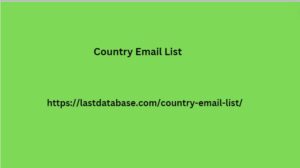Post by account_disabled on Mar 5, 2024 6:10:00 GMT
Small Business? Scroll to top Andrew Blackman Andrew Blackman Jul 25, 2022 • 14 min read English Startups Business Plans Entrepreneurship If you’ve worked in a corporate job, you probably know all about Key Performance Indicators (KPIs). Large companies use them all the time to measure their progress and make sure they’re on track to hit their targets. What are key performance indicators KPIs What are key performance indicators (KPIs)? (graphic source) But many small businesses are missing a trick: A 2016 survey by Geckoboard found that nearly half of small and medium-sized business owners have failed to identify any KPIs. The same survey found.
Businesses that do track KPIs regularly were about twice as Country Email List likely to hit their targets. So in this tutorial, you’ll learn how to apply this powerful planning tool to your small business. You’ll learn what KPIs are, the benefits of using them, different types of KPIs, and how to set effective KPIs and monitor them. By the end, you’ll be ready to use KPI reporting to take your small business to the next level of success. 1. What Are KPIs? Let’s start with a quick definition. Here’s how business software company Klipfolio defines KPIs: A Key Performance Indicator is a measurable value that demonstrates how effectively.

A company is achieving key business objectives. The term “measurable value” is important here. KPIs are driven by specific data, so that they provide a clear measure of your progress. Instead of just saying, “Our customers love us,” you’ll be able to say something like: “88% of customers say they would buy from us again, up from 85% last year, and 82% would recommend us to others, up from 80% last year.” That’s much more powerful than an anecdotal judgment, and it can help you by highlighting issues and allowing you to deal with them quickly. If that customer in the wrong direction, for example, you could run extra surveys to find out exactly why people.
Businesses that do track KPIs regularly were about twice as Country Email List likely to hit their targets. So in this tutorial, you’ll learn how to apply this powerful planning tool to your small business. You’ll learn what KPIs are, the benefits of using them, different types of KPIs, and how to set effective KPIs and monitor them. By the end, you’ll be ready to use KPI reporting to take your small business to the next level of success. 1. What Are KPIs? Let’s start with a quick definition. Here’s how business software company Klipfolio defines KPIs: A Key Performance Indicator is a measurable value that demonstrates how effectively.

A company is achieving key business objectives. The term “measurable value” is important here. KPIs are driven by specific data, so that they provide a clear measure of your progress. Instead of just saying, “Our customers love us,” you’ll be able to say something like: “88% of customers say they would buy from us again, up from 85% last year, and 82% would recommend us to others, up from 80% last year.” That’s much more powerful than an anecdotal judgment, and it can help you by highlighting issues and allowing you to deal with them quickly. If that customer in the wrong direction, for example, you could run extra surveys to find out exactly why people.

